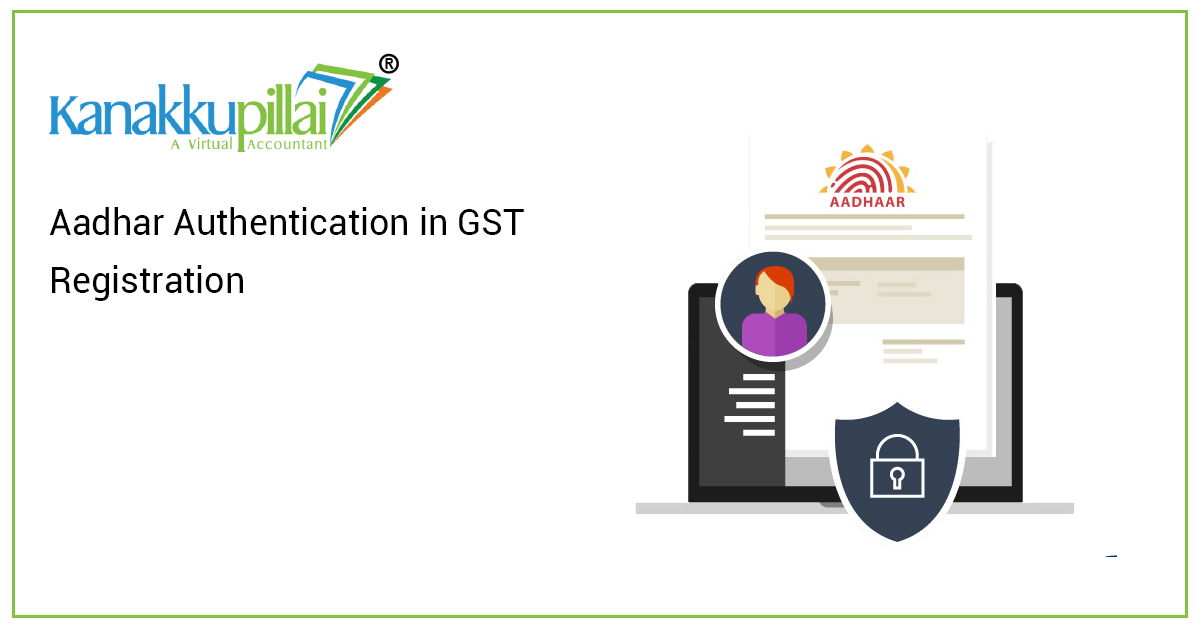From the 1st of April 2020 onwards, the Central Board of Indirect Taxes (CBIC) has issued a notification stating that Aadhar authentication is a requirement for GST Registration. This was later made optional, making the same not required for those taxpayers who are non-residents, non-Indian citizens, or persons who have already registered under GST.
What is the meaning of authentication using Aadhaar?
An Aadhaar number or card is a database that stores the basic information pertaining to an individual, along with the biometric information of such a person, such as a fingerprint. The details collected would be submitted to the CIDR or the Central Identities Data Repository. It shall be utilized or retrieved by entities and institutions when the individual initiates any action, such as inserting a new SIM card or performing other activities.
Therefore, we can say that Aadhaar allows for the authentication of individuals based on the information stored in the repository, making it available as a common platform that enables and simplifies this process. This also allows the identification of Aadhaar holders anywhere, anytime, and can be done while an individual or entity is attempting to register under GST.
GST Registration and Aadhar Authentication
When an assessee wants to get registration under GST, such an applicant can account for authentication using the Aadhar Card details or number. There are also exemptions provided for the same, and they pertain to those persons whom the Central Government exempts through the CGST Act.
In the case of assessees who submit applications for registration under GST after August 21, 2020, an opt-in or opt-out option shall be made available to them. However, if such an applicant submits the application for registration between April 1, 2020, and August 20, 2020, they shall be required to complete a mandatory authentication using their Aadhaar details.
Applicants opting for Aadhaar authentication should provide their Aadhaar number along with the application for GST registration. This should then be verified using the ‘Verify’ option on the GST Online Portal, utilizing the link for authentication, which will be sent to the mobile number and the email ID registered or linked to the Aadhaar Card. An OTP shall be generated automatically and entered into the GST Online Portal to finish the authentication using Aadhaar.
In a general sense, Aadhaar authentication using the Aadhaar details of the Authorized Signatory and at least one promoter (or a partner) of the entity shall be done. However, if the applicant is a company, LLP, a foreign company, a Trust, a Society, an AOP (Association of Persons), or a club, then Aadhaar authentication can be done only using the details of the Authorized Signatory.
Thereafter, whenever the assessee or taxpayer wishes to file returns or initiate an action using the GST Online Portal, an OTP will be generated to the email ID and mobile number linked to their Aadhaar. It should be entered for a successful submission or completion of the action generated.
If an applicant opts for authentication using Aadhar details or opts not to use the same, along with proceeding to file without Aadhar authentication, then for granting of the GST registration for such applicant, physical verification of the place of business shall be done by a GST official. The officers can also verify the e-KYC documents pertaining to the Authorized Signatory of the applicant entity, along with that of any promoter or partner, after obtaining permission from an officer of the GST Authority, but such official shall not be someone below the rank of Joint Commissioner, and it shall be received in writing.
The e-KYC documents shall include:
– Passport
– Voter ID Card
– Voter ID Card
– Any certificate issued by a Competent Authority of the Country
– KYC Form provided
Types of Businesses that are exempted from Aadhar Authentication
The following constitution of business shall be exempted or excluded from the mandatory requirement of Aadhar authentication:
- Non-Indian Citizen
- Local Authority
- A Statutory Body
- A Public Sector Undertaking
- The person who has submitted an application pertaining to section 25(9) of the GST Act
- Department falling under the Central or State Government.
Procedure for Aadhar Authentication under GST
The following are the steps to be undertaken by any applicant of GST registration for authenticating using the Aadhaar details or number:
- Upon submitting the application for registration, a link will be automatically sent to the mobile number and email ID provided in the registration form.
- Now, click on the link received on the mobile number or email ID and enter the details as required by the link. This shall include the entering of your Aadhaar number.
- Once you submit it, an OTP will be automatically generated for your email ID and mobile number. Enter the same in the Online GST Portal.
- A confirmation message will be generated stating ‘Successful Authentication’ on correct entry of such details.
- In case the applicant would want to re-generate the link for verification using the Aadhar card number or the details, the same shall be accessed in the following manner:
My applications – Aadhar Authentication Status – Resend Verification Link
Mandatory Cases
There are certain mandatory cases where the authentication using Aadhar details should be done, and this will include the following as per section 25(6C) of the CGST Act, such that they become eligible for GST registration:
– Authorized Signatory (Any type)
– Karta of a HUF
– Managing partner or an authorized partner of a partnership firm.
Thus, we can now conclude that authentication using Aadhar details is an easy way to complete the registration application under GST. Aadhaar should be seen as an easy and simple authentication process, as it is only a matter of providing the number and using it to retrieve the information or data pertaining to you stored in the repository. It simplifies most activities, making them easy and fast, while also being reliable.





